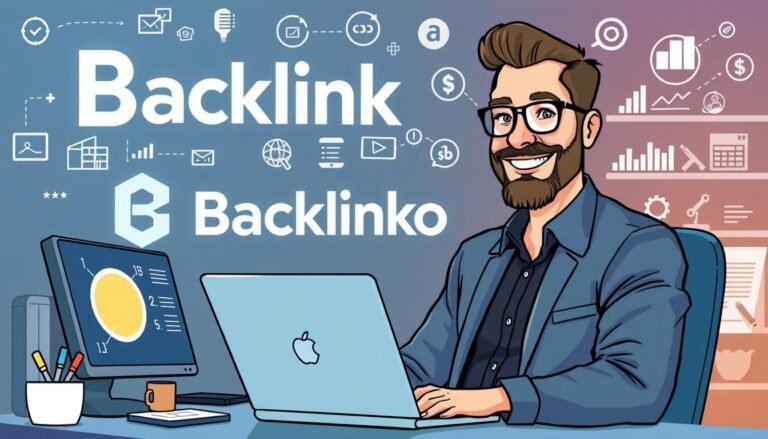Marketing Funnels: Guiding Customer Journeys
Did you know that businesses that implement marketing funnels experience a 10% increase in revenue?
If you want to guide your customers through a seamless buying journey, then understanding and optimizing your marketing funnel is crucial.
In this article, we will explore the strategies, tactics, and techniques you need to create awareness, nurture engagement, and drive conversions.
By personalizing your messages for each stage, you can maximize your results and achieve marketing success.
Key Takeaways
- The marketing funnel is a strategic framework that analyzes the customer journey from awareness to purchase.
- Tailoring marketing efforts to meet customer needs at each stage of the funnel helps guide them towards making a purchase.
- Top of the funnel strategies include social media advertising, content marketing, and influencer collaborations to create awareness.
- Middle of the funnel tactics involve email drip campaigns, content personalization, and retargeting techniques to nurture and engage leads.
Understanding the Marketing Funnel
You need to understand the marketing funnel to effectively guide your customers through their journey. The marketing funnel is a strategic framework that helps you visualize and analyze your customers’ journey from awareness to purchase. By understanding customer behavior at each stage of the funnel, you can tailor your marketing efforts to meet their needs and guide them towards making a purchase.
At the top of the funnel, customers are in the awareness stage. This is where they become aware of your brand and products. Understanding customer behavior at this stage involves identifying the channels and touchpoints that drive awareness and measuring key metrics such as reach and impressions. By analyzing these metrics, you can determine the effectiveness of your marketing efforts in generating awareness and attracting potential customers.
As customers move down the funnel, they enter the consideration stage. Here, they’re evaluating different options and comparing alternatives. Understanding customer behavior at this stage involves measuring metrics such as engagement and conversion rates. By tracking these metrics, you can assess the effectiveness of your marketing efforts in keeping customers engaged and moving them closer to making a purchase.
Finally, at the bottom of the funnel, customers reach the decision stage. This is where they make a purchase decision and become customers. Understanding customer behavior at this stage involves measuring metrics such as conversion rates and customer acquisition costs. By analyzing these metrics, you can evaluate the effectiveness of your marketing efforts in converting leads into customers and optimize your funnel accordingly.
Creating Awareness: Top of the Funnel Strategies
To effectively create awareness at the top of the funnel, you need to employ strategic tactics such as social media advertising, content marketing strategies, and influencer collaborations.
Social media advertising allows you to reach a wide audience and target specific demographics, while content marketing strategies help educate and engage potential customers.
Collaborating with influencers can also amplify your brand message and increase visibility.
Social Media Advertising
Social media advertising helps you create awareness at the top of the marketing funnel. It’s a powerful tool that can effectively reach your target audience through paid promotions and strategic targeting strategies. With social media platforms like Facebook, Instagram, and LinkedIn offering highly detailed targeting options, you can ensure that your ads are seen by the right people at the right time.
Paid promotion allows you to boost your brand’s visibility and increase exposure to potential customers. By investing in social media advertising, you can extend your reach beyond your existing audience and tap into new markets. Targeting strategies play a crucial role in optimizing your ad campaigns. By narrowing down your audience based on demographics, interests, behaviors, and location, you can deliver relevant and personalized content that resonates with your target market.
Content Marketing Strategies
When creating awareness at the top of the marketing funnel, it’s important to develop effective content marketing strategies that engage and resonate with your target audience. Two key strategies that can help you achieve this are video marketing techniques and blogging for SEO.
Video marketing techniques are a powerful way to capture your audience’s attention and deliver your message in an engaging and memorable way. By creating high-quality videos that showcase your products or services, you can effectively communicate your brand’s value proposition and differentiate yourself from competitors. Additionally, videos can be easily shared on social media platforms, increasing your reach and visibility.
Blogging for SEO is another effective strategy for creating awareness. By consistently publishing high-quality, informative blog posts, you can position yourself as a thought leader in your industry and attract organic traffic to your website. By optimizing your blog posts with relevant keywords and providing valuable content, you can improve your search engine rankings and increase your visibility among potential customers.
Influencer Collaborations
If you want to create awareness at the top of the marketing funnel, one effective strategy is to leverage influencer collaborations. By partnering with influential individuals in your industry, you can tap into their large and engaged audience to spread the word about your brand.
Here are three reasons why influencer partnerships should be a part of your marketing strategy:
-
Expanded Reach: Influencers have a strong following and can help you reach a wider audience that may not be familiar with your brand.
-
Credibility and Trust: Collaborating with influencers adds credibility to your brand, as their followers trust their recommendations and opinions.
-
Authenticity and Engagement: Influencers have built genuine connections with their audience, resulting in higher engagement rates and more meaningful interactions.
Influencer marketing trends show that this strategy is a powerful tool for creating awareness and driving top-of-funnel growth. Don’t miss out on the opportunity to leverage the influence of others to boost your brand’s visibility.
Nurturing and Engaging: Middle of the Funnel Tactics
To effectively nurture and engage your potential customers in the middle of the funnel, there are several tactics you can employ.
One such tactic is using email drip campaigns to deliver targeted and personalized content to your leads. This allows you to stay top of mind and guide them further along their customer journey.
Additionally, implementing content personalization strategies helps you tailor your messaging and offers to each individual’s needs and preferences.
Lastly, utilizing retargeting and remarketing techniques allows you to reach out to those who’ve already shown interest in your brand, reminding them of the value you offer and encouraging them to take the next step.
Email Drip Campaigns
You should consider implementing email drip campaigns to nurture and engage your leads during the middle of the funnel.
Email segmentation allows you to personalize your messages based on your leads’ interests and behaviors.
With automation workflows, you can set up a series of emails that are automatically sent to your leads at specific intervals, ensuring consistent and timely communication.
Here’s why email drip campaigns are an essential tactic for your marketing funnel:
-
Increased engagement: By sending targeted and relevant content, you can capture your leads’ attention and keep them engaged throughout their journey.
-
Nurturing relationships: Drip campaigns allow you to build strong relationships with your leads by providing valuable information and addressing their pain points.
-
Conversion optimization: By guiding your leads through the funnel with strategic emails, you can increase the chances of conversions and ultimately drive more revenue.
Implementing email drip campaigns can help you create a seamless and personalized experience for your leads, leading to higher engagement, stronger relationships, and increased conversions.
Content Personalization Strategies
As you continue to nurture and engage your leads in the middle of the funnel, it is important to implement content personalization strategies. Personalization benefits your marketing efforts by creating a more tailored and relevant experience for your leads, ultimately increasing their engagement and conversion rates. To achieve this, you can utilize various customization techniques such as dynamic content, behavioral targeting, and personalized recommendations.
| Personalization Benefits | Customization Techniques |
|---|---|
| Higher engagement | Dynamic content |
| Increased conversion | Behavioral targeting |
| Improved customer loyalty | Personalized recommendations |
Dynamic content allows you to display different content based on individual preferences or behavior, ensuring that each lead receives relevant information. Behavioral targeting involves tracking and analyzing user behavior to deliver personalized content based on their actions. Personalized recommendations use data and algorithms to suggest relevant products or content to each lead.
Retargeting and Remarketing
By retargeting and remarketing to your leads, you can effectively nurture and engage them in the middle of the funnel, increasing their likelihood of conversion. Retargeting is the process of showing targeted ads to people who’ve previously visited your website, while remarketing involves reaching out to individuals who’ve interacted with your brand but haven’t converted yet.
Here are some benefits of retargeting:
- Increased brand awareness: By consistently showing your ads to leads, you can keep your brand top of mind and reinforce your messaging.
- Higher conversion rates: Since retargeting focuses on people who’ve shown interest in your offerings, they’re more likely to convert.
- Cost-effective advertising: Retargeting allows you to optimize your advertising budget by targeting a specific audience, which can result in higher ROI.
To make the most of retargeting, consider implementing the following remarketing strategies:
- Segment your audience based on their behavior and interests to deliver personalized messages.
- Utilize dynamic ads that adapt to the user’s previous interactions with your brand.
- Create compelling and relevant content to keep your leads engaged and interested in your offerings.
Driving Conversions: Bottom of the Funnel Techniques
One effective technique at the bottom of the funnel is using personalized offers to entice potential customers to make a purchase. Conversion optimization is key at this stage of the marketing funnel, and one way to achieve it is by analyzing funnel analytics and tailoring offers accordingly. By understanding the customer’s journey and behavior, you can create personalized offers that address their specific needs and desires.
Funnel analytics provide valuable insights into the customer’s interactions with your brand. You can track their actions, such as clicks, page views, and time spent on each page. This data helps you identify potential bottlenecks or areas for improvement within the funnel. By analyzing this information, you can optimize your marketing strategies and create personalized offers that resonate with your target audience.
When crafting personalized offers, consider using dynamic content that adapts to the customer’s preferences and behavior. For example, if a customer has previously shown interest in a particular product, you can send them a personalized offer with a discount or additional incentives. This targeted approach increases the likelihood of conversion and drives sales.
Another effective technique is to create urgency and scarcity in your offers. Limited-time promotions or exclusive deals create a sense of urgency, encouraging potential customers to take action and make a purchase. By leveraging time-sensitive offers, you can push customers further down the funnel and increase conversions.
Personalization: Tailoring Messages for Each Stage
To effectively guide your customers through each stage of the marketing funnel, tailor your messages to their specific needs and preferences. Personalization plays a crucial role in capturing and retaining the attention of your audience. By customizing your recommendations and analyzing customer actions through behavioral tracking, you can create targeted messages that resonate with each individual at every stage of their journey.
Here are three reasons why personalization is essential for tailoring messages for each stage of the marketing funnel:
-
Customized recommendations: By tailoring product suggestions based on the customer’s previous interactions and preferences, you can provide them with relevant and personalized options. This increases the likelihood of conversion and enhances their overall experience.
-
Behavioral tracking: Analyzing customer actions allows you to understand their behavior and preferences. By tracking their interactions with your website, emails, or social media, you can gain valuable insights that enable you to create more targeted and personalized messages.
-
Improved engagement and conversion: Personalized messages resonate with customers on a deeper level, leading to increased engagement and higher conversion rates. When customers feel understood and valued, they’re more likely to trust your brand and make a purchase.
Optimizing Your Funnel for Maximum Results
Make sure your funnel is optimized for maximum results by analyzing key metrics and making data-driven improvements. Conversion optimization and funnel analytics are crucial elements in achieving success with your marketing funnel. By closely monitoring and analyzing the performance of each stage in the funnel, you can identify areas for improvement and take strategic actions to enhance the overall conversion rate.
To effectively optimize your funnel, it is important to focus on three key metrics: conversion rate, drop-off rate, and average order value. These metrics provide valuable insights into the effectiveness of each stage and help you identify where potential bottlenecks may be occurring.
| Metric | Description | Action |
|---|---|---|
| Conversion Rate | Measures the percentage of visitors who take the desired action at each stage of the funnel. | Identify high-performing stages and replicate tactics. Analyze low-performing stages and make improvements. |
| Drop-off Rate | Measures the percentage of visitors who abandon the funnel at each stage. | Identify potential reasons for drop-offs and take actions to address them. |
| Average Order Value | Measures the average amount spent by customers at each stage of the funnel. | Identify opportunities to increase average order value through upselling or cross-selling tactics. |
Conclusion
In conclusion, by understanding and utilizing marketing funnels effectively, businesses can guide their customers through a strategic journey towards conversion.
With top of the funnel strategies, businesses can create awareness and attract potential customers.
Middle of the funnel tactics help nurture and engage these prospects, building a strong relationship.
Finally, bottom of the funnel techniques drive conversions and turn prospects into loyal customers.
By personalizing messages for each stage, businesses can optimize their funnel for maximum results, ultimately leading to success.
So, start implementing these strategies today and watch your business grow exponentially.




